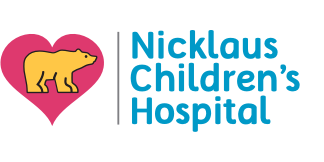- Parents Home
- Para Padres
- Allergy Center
- Asthma Center
- Cancer Center
- Diabetes Center
- Diseases & Conditions
- Doctors & Hospitals
- Emotions & Behavior
- First Aid & Safety
- Flu Center
- Food Allergy Center
- General Health
- Growth & Development
- Heart Health
- Homework Help Center
- Infections
- Newborn Center
- Nutrition & Fitness Center
- Play & Learn Center
- Pregnancy Center
- Q&A
- Recipes
- School & Family Life
- Sports Medicine Center
- Videos
- Kids Home
- Para Niños
- Asthma Center
- Cancer Center
- Diabetes Center
- Feelings
- Getting Help
- Health Problems
- Health Problems of Grown-Ups
- Heart Center
- Homework Center
- How the Body Works
- Illnesses & Injuries
- Kids' Medical Dictionary
- Movies & More
- Nutrition & Fitness Center
- Puberty & Growing Up
- Q&A
- Recipes & Cooking
- Relax & Unwind Center
- Stay Safe Center
- Staying Healthy
- Staying Safe
- Videos
- Teens Home
- Para Adolescentes
- Asthma Center
- Be Your Best Self Center
- Cancer Center
- Diabetes Center
- Diseases & Conditions
- Drugs & Alcohol
- Expert Answers (Q&A)
- Flu Center
- Homework Help Center
- Infections
- Managing Your Medical Care
- Managing Your Weight
- Nutrition & Fitness Center
- Recipes
- Safety & First Aid
- School & Work
- Sports Center
- Stress & Coping Center
- Videos
- Your Body
- Your Mind
A to Z: Burn, First-Degree
A first-degree burn is a minor burn that only affects the top layer of skin, or epidermis. It is the mildest type of burn.
More to Know
Most first-degree burns are caused by sun exposure (sunburn) or brief contact with flames or hot objects and liquids — such as scalds from steaming water, knocked over coffee cups, hot foods, and heated cooking fluids.
Symptoms of first-degree burns include redness, pain, and minor swelling. The skin is dry without blisters.
First-degree burns can be treated at home and will usually heal in about 3 to 6 days. The superficial skin layer over the burn may peel off in 1 or 2 days. If a burn doesn't heal within a couple of weeks or appears to be getting worse or infected, call your doctor. Special attention should be given to burns on the face, hands, feet, and groin as these can be more serious.
Keep in Mind
First-degree burns are uncomfortable but are easy to treat and usually have no lasting impact. Taking safety precautions at home can help prevent many first-degree burns.
All A to Z dictionary entries are regularly reviewed by KidsHealth medical experts.

© 1995- The Nemours Foundation. KidsHealth® is a registered trademark of The Nemours Foundation. All rights reserved.
Images sourced by The Nemours Foundation and Getty Images.

